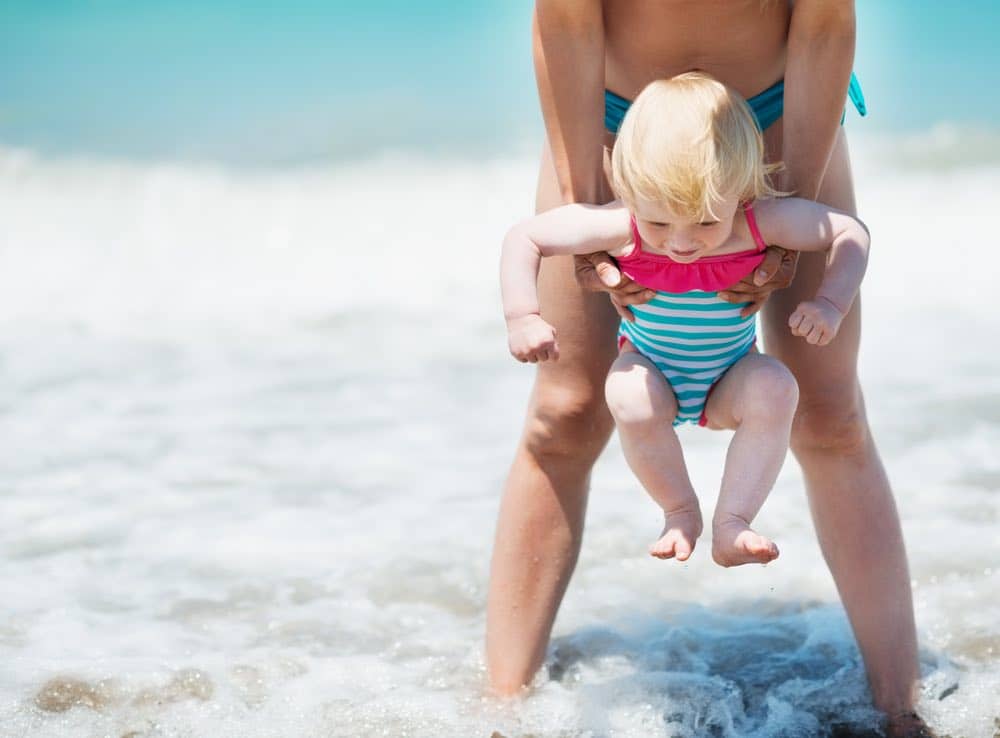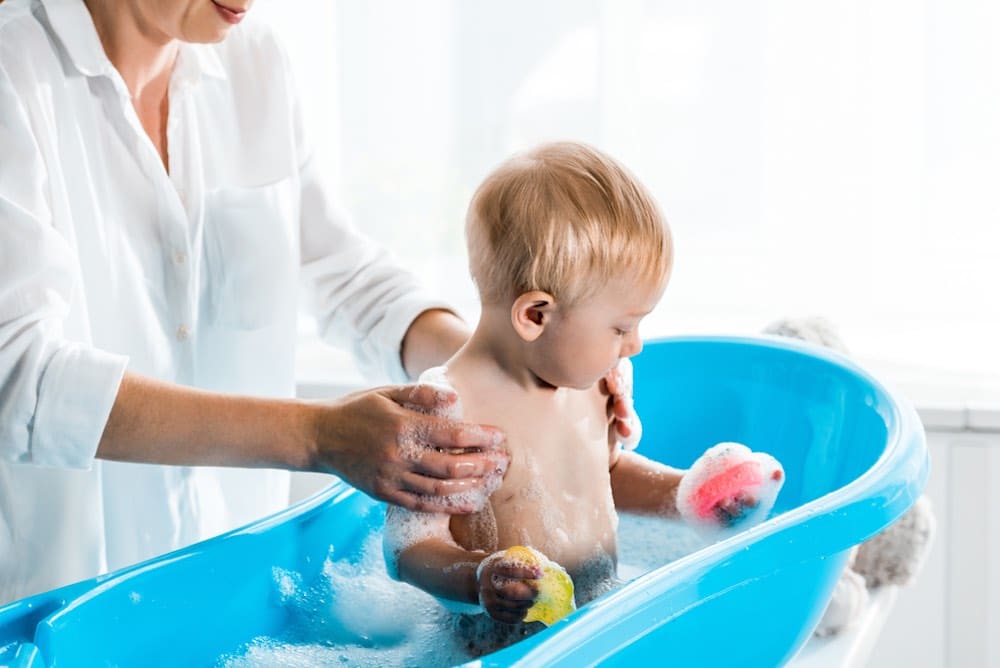
Struggling with water fear? Need tips to help a toddler who hates the water? Well, get ready to splash as we’ve got Expert tips for you from Michelle at Teach Baby to Swim.
Do you have a toddler who hates the water? A fear of water is a very common toddler phobia. Even bath time and washing hair can become a challenge. Here are some top tips to encourage them to conquer their fear and learn to love the water.
1. Bath Time
Helping your child overcome their fear and love the water starts during bath time. We will help your child learn that water can be fun with this easy bathing ritual.
Make the water fun: Is bath time an enjoyable experience for both you and your child? Most families have a variety of bath time experiences with their children. To help your child have more fun in the bath try these simple bath activities:
- Sing, read or tell stories to your child during bath time.
- Ask your child what toys they would like to bring to the bath. (You can do this for your swimming lessons too.)
- Bathe younger and older siblings together. This way, a fearful child can see that big brothers or sisters enjoy the water.
- Encourage them to blow bubbles in the water using his or her mouth.
Reward good bath time behaviour with favourites like watermelon lollipops or princess stickers. Before you know it, your child will start looking forward to bath time. They are on their way to loving the water!
2. Bath Time: Be comfortable in the water
You can help your child overcome their fear of water using squirt toys and a “rain bucket” in the bath tub. To help your child feel comfortable in and around water, we will gradually help them feel at ease during a full submersion.
First, use squirt toys (in non-soapy water) to squirt other toys during bath time. Show your child it is alright for the toys to be splashed with water. Help your child squirt his or her favourite toys with water.
Next, find a “rain bucket” (a bucket or cup with holes in the bottom). Scoop some non-soapy water and sing “rain, rain go away” while you drip water on your child’s hands and feet. Eventually, your child will be comfortable enough to let you drip water the back of their neck and top of the head.
This is a big step towards helping your child overcome a fear of water for swimming lessons. Once your child feels comfortable with this routine, bring the same toys and rain bucket to the pool to warm up for your swim lessons.
For children who are extremely uncomfortable around water, do these same steps in an empty bath tub. Start with squirting other toys, and move on to the “rain bucket” only when your child is ready. Eventually, you will be able to fill the tub with more and water.
Use pool toys to keep swim lessons fun!
3. Swim Lesson: Relax and have fun in the pool
Start each swim lesson or pool time with a welcome song. Sing any favourite song you would like to your child. Just make sure to repeat that same song at the start of each swim lesson. This helps your child become familiar with the water quicker. End pool time with a goodbye song and a yummy lollipop or stickers. Colourful goggles or waterwings can feel more comfortable around the water.
4. Be Patient with fears of water
The best way to help children enjoy the water and learn swimming is “going at the child’s pace”. Children learn best when they are physically, emotionally and mentally ready to lean. This is why your swim lessons should slowly introduce new water skills to your child when they are ready. We use our “Swim Routine” to get your child familiar with basic swim skills before adding more advanced swim skills. So be patient and let your child learn to swim at their own pace. They will learn faster and enjoy the water more.
5. Have Fun to overcome toddler water fears
Learning to swim is a brand new experience for a child. They must learn to move their bodies in new ways in water. Many children find it challenging at the beginning of the swim lessons. If you want to keep your child engaged during the lessons, make each lesson feel like playtime by including songs, fun toys and taking breaks whenever needed.
This is a guest post by Swim Coach Michelle from How to Teach Children to Swim where parents learn how to teach children to swim. To see all of Michelle’s articles, click here.
*This article was first published in 2013 and updated for links and accuracy in 2020.















